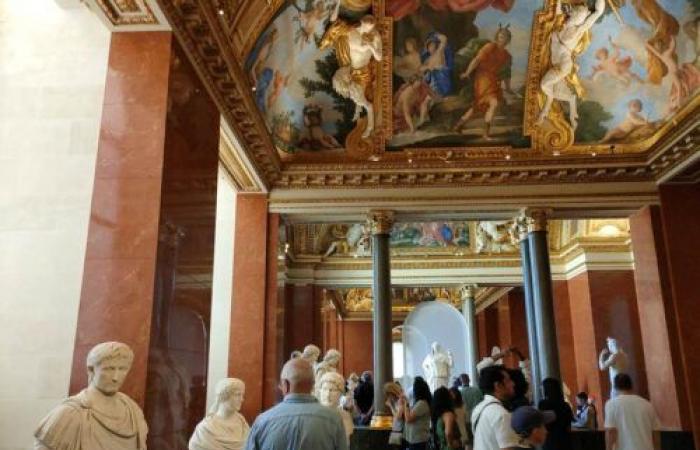In its first weekend, the exhibition opens space to the largest private collection of Roman antiquities on the planet, belonging to the Casa Torlonia, which accumulated invaluable sculptures during the 19th century, thanks to the work of the nobles Giovanni Torlonia and his son Alessandro, first and second prince of Civitella Cesi, respectively.
Marble figures sculpted by the Greeks and Romans before Christ and in the first centuries of Our Era attract the attention of tourists from around the world, in the first exhibition outside Italy in decades of works such as “The Resting Goat (Il Coprone) )”, which welcomes visitors in a harbinger of the spectacular adventure they will experience.
Giovanni began to shape his vast collection in 1800, with the acquisition of works treasured by the sculptor Bartolomeo Cavaceppi and the Giustiniani family, enriched by finds from later excavations.
The Louvre reports that the heir Alessandro continued his father’s artistic crusade with the purchase of Villa Albani and its antiquities in 1886.
The statue of the goddess Hygieia, found in the Maxentian Circus, on the banks of the Appian Way; sarcophagi found during excavations promoted by the first prince Torlonia and human figures, both faces and full bodies, make up the exhibition, which can be seen in the most famous and visited museum in the world until November.
One of the jewels of the Roman and Greek archaeology exhibition in Paris is the “Albani Vase”, discovered in 1762 on the Appian Way, an object that passed from the Albani collection to the Torlonia.
Several of the works presented by the Louvre reflect the Roman Empire’s tendency to copy Greek sculptures created from the third century BC onwards.
Reproductions became the specialty of renowned workshops of the time, so the results were in many cases spectacular, such as the statues of the emperor Hadrien and the god Eros, exhibited here.
The atmosphere for enjoying the treasures of the Torlonia collection could not be better, given the renovation over the last two years of the decorations of the summer apartments of Anne of Austria, mother of King Louis XIV, designed by the architect Louis Le Vau between 1655 and 1658.
rgh/wmr



